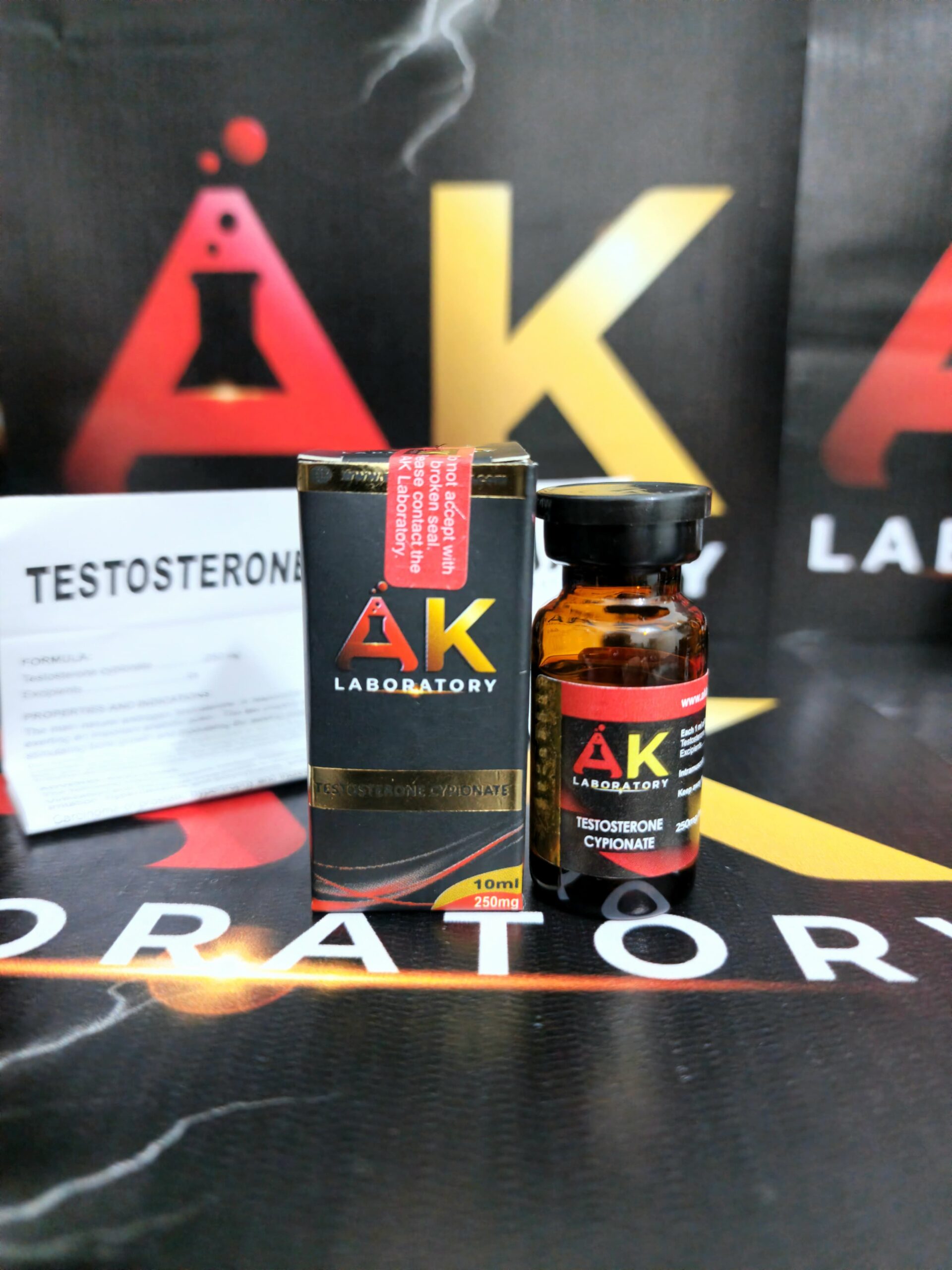Testosterone Cypionate 250mg/ml
- Home
- Testosterone Cypionate 250mg/ml
Description
intramuscularly
Adult use.
Formula:
Each 1 ml of injectable solution contains:
Testosterone Cypionate……………………………… 250 mg.
Excipients………………………… cs
Properties:
The main natural androgen, testosterone, is responsible for the development and maintenance of male secondary sexual characteristics, exerting an important anabolic action. This last property contributes, above all, to the acceleration of the growth process in puberty, stimulating bone growth and modulating the welding process of the epiphysis of long bones. In the form of cypionate, it has a prolonged therapeutic action, since it was hydrolyzed in vivo to free testosterone, being superior to propionate in this respect. Testosterone cypionate is approximately 99% strongly bound to plasma proteins (80% globulin, 19% albumin and 1% free). It is biotransformed in the liver and eliminated mainly in the urine. Its half-life as intramuscular cypionate is approximately 8 days. In white tissues, it is converted to 5-alpha-dihydrotestosterone, which suppresses GHR, LH and FSH by negative feedback.

We emphasize that no one should consume without prior medical authorization.
Attention the therapeutic information of this product (treatment, prevention or indications for use) are not allowed in Brazil The therapeutic information present in the article is only valid in its country of origin USA.
In a normal male, testosterone stimulates the production of erythrocytes because it favors the synthesis of erythropoiesis-stimulating factors.
Therapeutic indications:
Congenital or acquired primary hypogonadism, when there is testicular failure due to cryptorchidism, bilateral torsion, testicular absence syndrome or orchiectomy. Hypogonadrotrophic hypogonadism: when there is congenital or acquired LH-RH (luteinizing hormone-releasing hormone) deficiency or hypothalamic-pituitary damage due to surgery, trauma, tumors or radiation. Delayed puberty, when there is a familial pattern of delayed puberty, not secondary to a pathological disorder, in patients who have not responded to supportive psychological therapy.
Male climacteric: as restorative therapy in impotence or other symptoms associated with this disorder, when the etiology is due to a verified androgen deficiency. Severe malnutrition, myelofibrous aplastic anemia, myelosclerosis, agnogenic myeloid metaplasia, hypoplastic anemias caused by malignancy or myelotoxic drugs. Inoperable breast carcinoma in women with hormone-responsive tumors or those who have demonstrated a previous response to hormone therapy.
Adverse reactions:
The following reactions require medical supervision:
Virilization and menstrual irregularities in women, bladder irritability, gynecomastia, anaphylaxis, edema, erythrocytosis, gastrointestinal irritation, hypercalcemia and polycythemia, androgenic alopecia, seborrhea and acne in men and women.
Carcinoma of prostatic hypertrophy and increased sexual desire develop in patients. These are adverse reactions of rare incidence during long-term or high-dose therapy. Hepatic necrosis, leukopenia, hepatic purpura.
Other adverse reactions are:
constipation, nausea, diarrhoea, infection, redness, pain or irritation at the injection site, changes in libido, stomach pain, sleep difficulties, impotence, testicular atrophy, headaches, anxiety, depression, generalized paraesthesia, sleep apnoea sleep, skin irritation on the skin.
Contraindications:
It is contraindicated in patients with breast cancer (male), diagnosed or suspected prostate cancer or adenoma, severe hepatic or renal heart failure in prepubertal or aggressive individuals, pregnancy.
Posology:
Hypogonadism, menopause and impotence (male replacement therapy): 60- 400 mg. I.M. every 2 to 4 weeks.
Male delayed puberty (replacement therapy): 25 to 200 mg. Every 2 to 4 weeks, for a period usually limited to 6 months.
Antineoplastic, in inoperable sinus cancer (female): 200 to 400 mg. I.M. every 2 to 4 weeks.
Precautions and Warnings:
In the palliative treatment of sinus cancer, do not continue the therapy if after 3 months the disease resumes or if hypocalcemia was verified in any phase of the same. Androgen therapy in women, even if it is of short duration, can produce virilization, particularly vocal and hairy.
Androgen therapy is not recommended to improve athletic performance. In children, this medication should be used with caution due to adverse effects on the process of bone maturation, which can be accelerated without producing compensatory gain in linear growth.
When male patients over 50 years old are treated with androgens, there is a greater risk of prostate enlargement or the development of prostate cancer. For this reason, prostate and blood tests are often performed before prescribing androgens for men of this age. During long-term treatment, oligospermia, azoospermia or reduced sperm function may occur, resulting in a possible infertility, with spontaneous remission after treatment suspension. Patients with acute prostatic hypertrophy may develop acute urethral obstruction, requiring immediate withdrawal of medication.
Urinary serum calcium levels should be frequently determined in women with metastatic sinus carcinoma under testosterone treatment. During treatment with prepubertal minors, bone radiographs should be performed every 6 months. In patients with acute intermittent porphyria, androgens can precipitate attacks of this condition.
It is usually preferable to start the treatment with full doses and adjust later to individual characteristics.
Drug Interaction:
The Testoland – Depot can react with the following drugs:
Adeno, glyco or mineralcorticoids: Corticotropin, foods or medicines that contain sodium (may increase the risk of edema, predispose to acne).
Oral antidiabetics or insulin because I could have reduced serum glucose levels.
Somatropin.
Hepatotoxic drugs (hepatotoxicity is increased).
Overdosing:
Frequent doses can trigger symptoms of slow remission, as it is a long-acting medication. It is recommended to suspend the medication immediately.
Go to the Medical Emergency Center
Recommendations:
The use of a needle or a wet syringe can cause a clouding of the solution, which does not affect the effectiveness of the long-acting medication. If crystals form in the ampoules, heating or stirring may dissolve the crystals. The intramuscular injection must be administered deeply into the gluteal muscle or the deltoids. Do not administer intravenously. Store at 15° – 30° C and protect from freezing.
Shake before use.
Presentation:
Injectable oily solution:
Box containing 1 vial of 10ml
Store at a temperature below 25°C in a dry place and out of reach of children.



